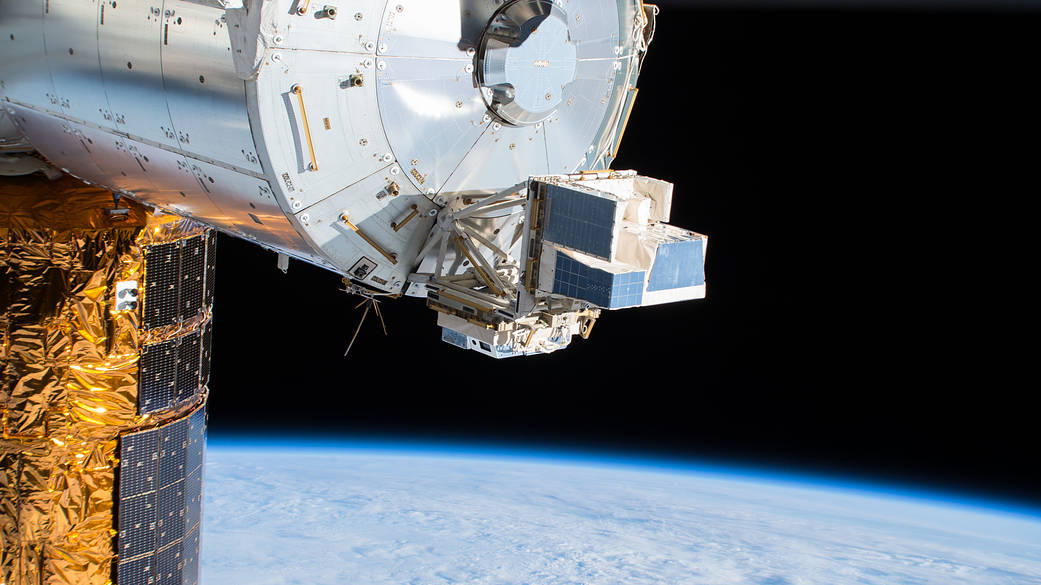
Lightning flashes from a storm cloud to strike the ground. Such bolts represent only a small part of the overall phenomenon of lightning. The most powerful activity occurs high above the surface, in Earth’s upper atmosphere.
Up there, lightning creates brief bursts of gamma rays that are the most high-energy naturally produced phenomena on the planet. Researchers recently measured these high-energy terrestrial gamma-ray flashes, or TGFs, using instruments on the International Space Station. The work helps reveal the mechanism behind the creation of the bright flashes we call lightning.
The instruments are part of the Atmosphere-Space Interactions Monitor (ASIM), an Earth observation facility on the outside of the space station used to study severe thunderstorms and their role in Earth’s atmosphere and climate.
This photo of the ASIM investigation installed on the International Space Station’s Columbus External Payload Facility was taken by the ground-controlled External High Definition Camera 3.
Image Credit: NASA

























